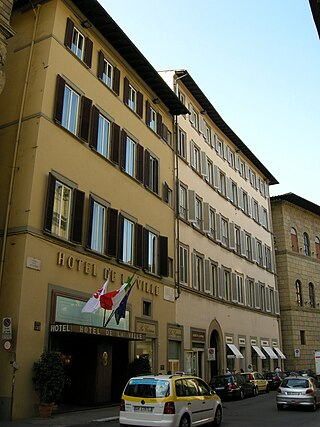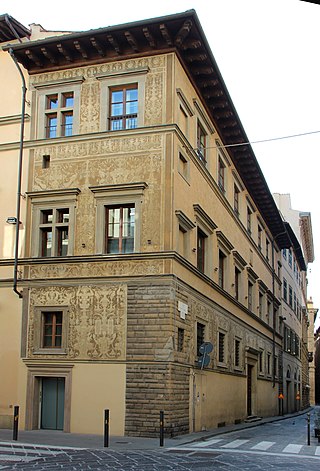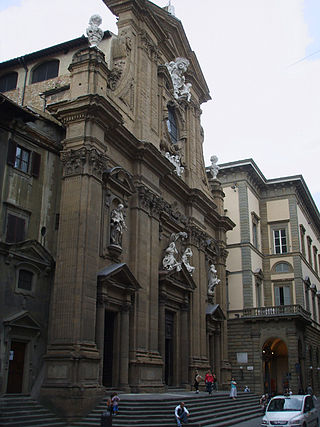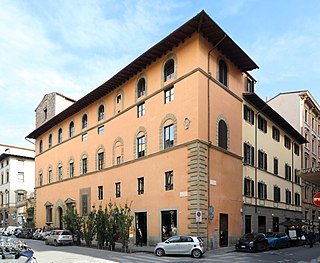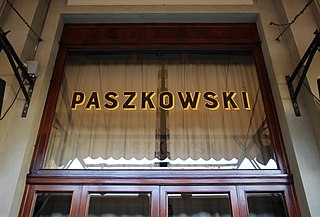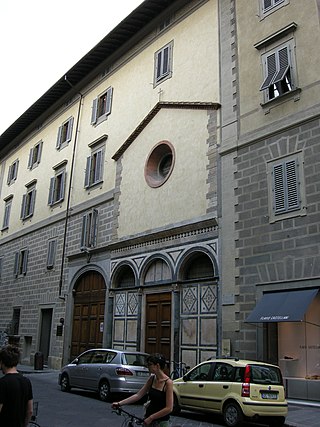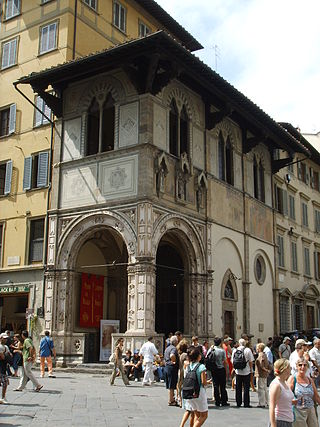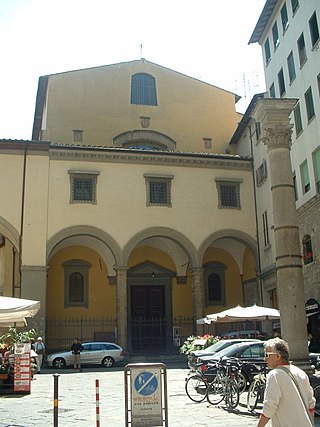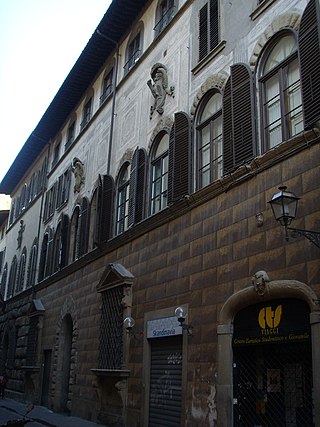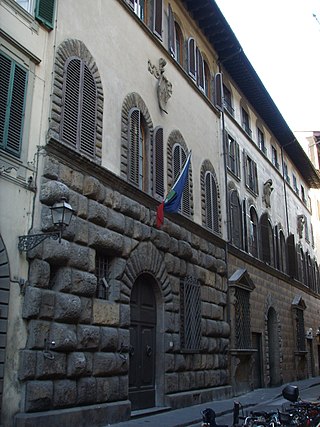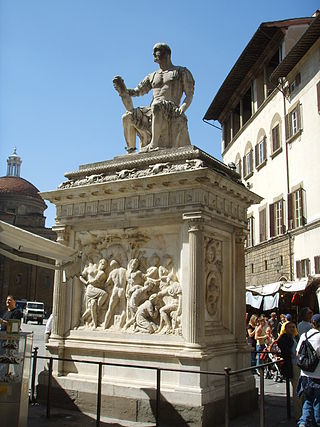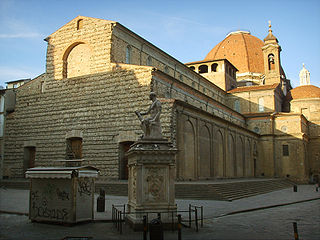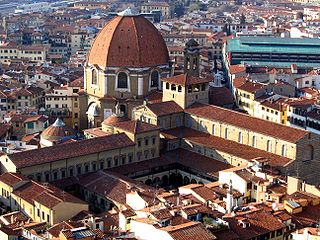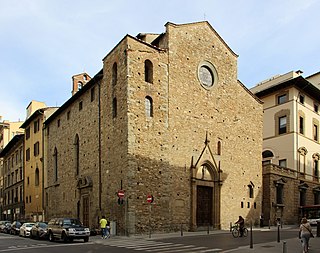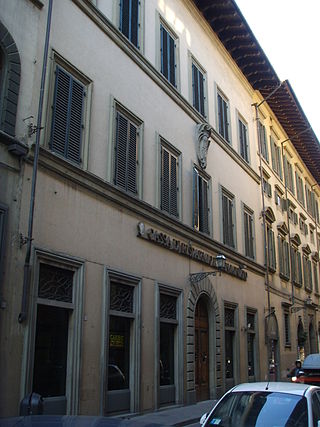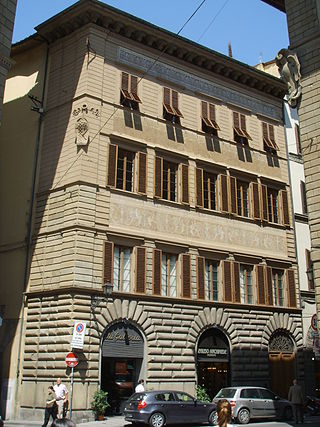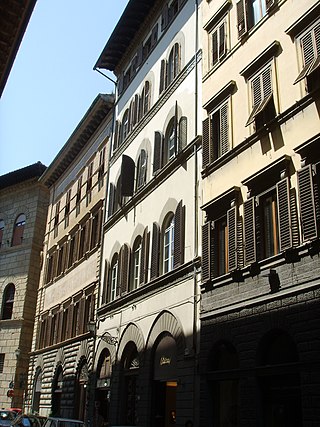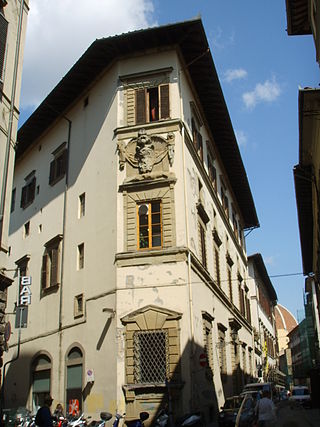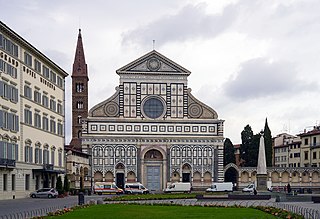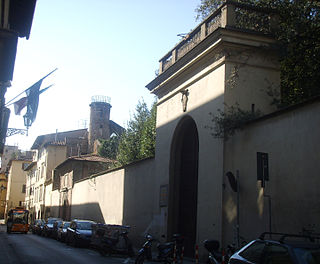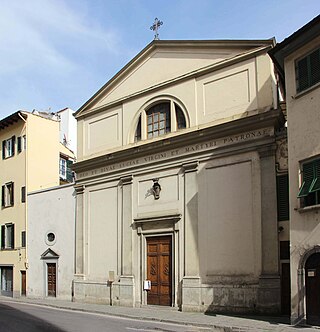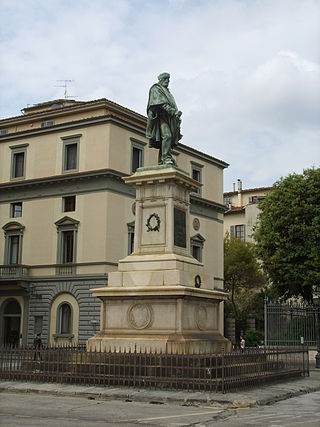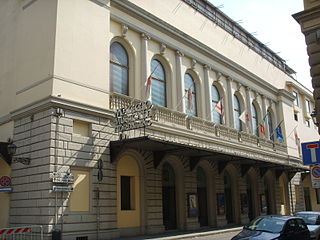Self-guided Sightseeing Tour #1 in Florence, Italy
Legend
Guided Free Walking Tours
Book free guided walking tours in Florence.
Guided Sightseeing Tours
Book guided sightseeing tours and activities in Florence.
Tour Facts
8.3 km
95 m
Experience Florence in Italy in a whole new way with our free self-guided sightseeing tour. This site not only offers you practical information and insider tips, but also a rich variety of activities and sights you shouldn't miss. Whether you love art and culture, want to explore historical sites or simply want to experience the vibrant atmosphere of a lively city - you'll find everything you need for your personal adventure here.
Activities in FlorenceIndividual Sights in FlorenceSight 1: Santissimo Crocifisso
The church of the Holy Crucifix in Monticelli is a Catholic place of worship located in Florence in Via Pietro di Cosimo.
Sight 2: Chiesa di San Piero a Monticelli
The church of San Pietro a Monticelli is a Catholic place of worship located in Florence, on the corner of Via Pisana and Via di Soffiano.
Sight 3: Chiesa di Santa Maria al Pignone
The church of Santa Maria al Pignone is a Catholic place of worship in Florence located in the square of the same name, between Via Felice Cavallotti and Via della Fonderia, and today represents one of the few meeting spaces in the Florentine district of the same name of Pignone, located west of San Frediano in the Oltrarno area. The name of the suburb derives from an ancient wall structure for the mooring of boats that traveled along the Arno, called "pine cone".
Sight 4: Porta San Frediano
The Porta San Frediano was the westernmost gate in the 13th-century walls of the Oltrarno section of Florence, region of Tuscany, Italy. It is located where Borgo San Frediano becomes Via Pisana. This was the access gate to the road to Pisa.
Sight 5: Piazza Torquato Tasso
Piazza Tasso is a city square in Oltrarno, Florence, Italy.
Sight 6: Palazzo Lenzi
Palazzo Lenzi is located in Piazza Ognissanti in Florence 2/r. It is the seat of the Honorary Consulate of France and, from 1910 - 1912, of the Institut Français de Florence, the first Institute of Culture abroad in the world and a forge of UNESCO.
Sight 7: Ognissanti
The chiesa di San Salvatore di Ognissanti, or more simply chiesa di Ognissanti, is a Franciscan church located on the piazza of the same name in central Florence, region of Tuscany, Italy. Founded by the lay order of the Umiliati, the church was dedicated to all the saints and martyrs, known and unknown.
Sight 8: Casa-galleria Vichi
The Vichi house-gallery is an Art Nouveau building in Florence, located in Via Borgo Ognissanti, a few steps from the church of Ognissanti.
Sight 9: Chiesa di San Paolino
San Paolo Apostolo, more commonly known as San Paolino, is a Romanesque-style, Roman Catholic church and convent located in Via di S. Paolino #8, in central Florence, region of Tuscany, Italy. The church is near the Church of the Ognissanti.
Sight 10: Oratorio dei Santi Jacopo e Filippo
The Oratory of Saints Jacopo and Filippo is a Catholic place of worship located in Via della Scala in Florence.
Sight 11: Palazzo Da Magnale
Palazzo Da Magnale is located in Florence in Via del Sole 11, at the corner of Piazza Santa Maria Novella.
Sight 12: Palazzo Farinola
Palazzo Farinola is located in Florence in Via del Sole 9, at the corner of Via del Moro.
Sight 13: Museo Marino Marini (Chiesa di San Pancrazio)
Marino Marini (1901–1980) was one of the most important Italian artists of the twentieth century, especially as a sculptor. He was born in Pistoia, but he studied art in Florence, before moving to Monza as a teacher and finally arriving at the prestigious Academy of Fine Arts of Brera in Milan. The museum houses the second-largest collection of his works, after collection dedicated to him in his hometown.
Sight 14: Palazzetto Tornabuoni
The Palazzetto Tornabuoni is located in Via de' Tornabuoni 17 in Florence, between the Viviani Della Robbia palace and the Larderel palace.
Sight 15: Palazzo Beccanugi
Palazzo Beccanugi is located in Piazza Antinori 1 in Florence.
Sight 16: Palazzo Larderel
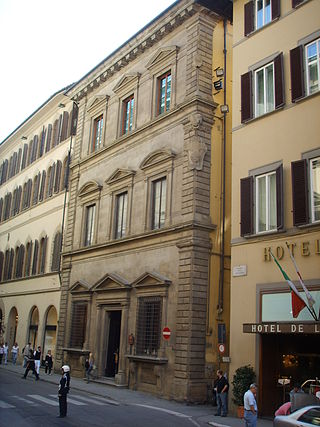
The Palazzo Larderel, once Tebalducci and Giacomini is a Renaissance-style palace, located on Via de' Tornabuoni number 19, corner via de' Giacomini 1, in the city of Florence, region of Tuscany, Italy.
Sight 17: Palazzo Sertini
Palazzo Sertini is located in Via de' Corsi 1, at the corner of Via de' Pescioni, in Florence, in front of the south side of the church of San Gaetano.
Sight 18: Chiesa dei Santi Michele e Gaetano
San Gaetano, also known as Santi Michele e Gaetano, is a Baroque church in Florence, Italy, located on the Piazza Antinori, entrusted to the Institute of Christ the King Sovereign Priest.
Sight 19: Palazzo Ricci-Altoviti
The Ricci-Altoviti Palace is a historic building in the historic center of Florence, located in Via de' Vecchietti 6, at the corner of Via del Campidoglio. It incorporates the ancient tower of the Agli, still visible on the left side.
Sight 20: Caffè Concerto Paszkowski
Caffè Paszkowski is a historic place in Florence, located in Piazza della Repubblica 31-35/r at the corner of Via dei Brunelleschi, inside the building of the Fondiaria Assicurazioni building. It is part of the Historic Places of Italy and in 1991 it was bound in its furnishings and intended use by the Superintendency.
Sight 21: San Salvatore al Vescovo
San Salvatore al Vescovo is a church located in Florence, Italy.
Sight 22: Florence Baptistery of St. John

The Florence Baptistery, also known as the Baptistery of Saint John, is a religious building in Florence, Italy. Dedicated to the patron saint of the city, John the Baptist, it has been a focus of religious, civic, and artistic life since its completion. The octagonal baptistery stands in both the Piazza del Duomo and the Piazza San Giovanni, between Florence Cathedral and the Archbishop's Palace.
Sight 23: Loggia del Bigallo
Get Ticket*The Loggia del Bigallo is a late Gothic building in Florence, region of Tuscany, Italy. It stands at the corner of Piazza San Giovanni and via Calzaioli; tradition holds the site near the Baptistry of Florence was donated by a benefactor.
Sight 24: Colonna di San Zanobi
In Florence there are some columns erected over the centuries as urban decoration and testimony of various vicissitudes. There are not many as in Rome, for example, but each one is linked to a particular event, real or legendary, in the city's history.
Sight 25: Osservatorio Ximeniano
The Osservatorio Ximeniano is an independent measurement and research building specializing in meteorology and geophysics. It is based in Florence, in a part of the former Collegio degli Scolopi, with access from Piazza San Lorenzo. It is named after Leonardo Ximenes.
Sight 26: Palazzo Barbolani di Montauto
Palazzo Barbolani di Montauto, formerly Gerini, is located in Via de' Ginori 9 in Florence.
Sight 27: Palazzo Neroni
Palazzo Neroni is a historic building in the centre of Florence, located at via de' Ginori 7, with a rear entrance also at via della Stufa 4r-6r.
Sight 28: Chiesa di San Giovannino degli Scolopi
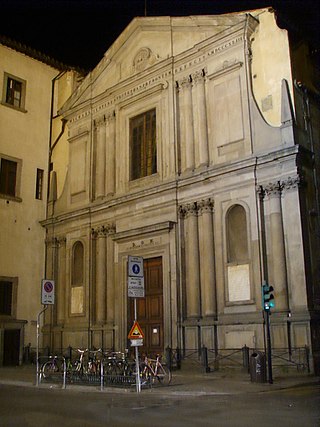
The church of San Giovannino degli Scolopi is a minor church in the center of Florence, located on Via Martelli corner with Via Gori.
Sight 29: Monumento a Giovanni delle Bande Nere
The Monument to Giovanni delle Bande Nere is an Italian Renaissance sculpture in marble, by Baccio Bandinelli and his workshop, now in Piazza San Lorenzo in Florence, Tuscany, Italy. The work took from 1540 to after 1560 to carve, and the base and statue, though always meant to be together, were only so placed in 1850.
Wikipedia: Monument to Giovanni delle Bande Nere, Florence (EN)
Sight 30: Basilica di San Lorenzo
The Basilica di San Lorenzo is one of the largest churches of Florence, Italy, situated at the centre of the main market district of the city, and it is the burial place of all the principal members of the Medici family from Cosimo il Vecchio to Cosimo III. It is one of several churches that claim to be the oldest in Florence, having been consecrated in 393 AD, at which time it stood outside the city walls. For three hundred years it was the city's cathedral, before the official seat of the bishop was transferred to Santa Reparata.
Sight 31: Medici Chapel
Join Free Tour*The Medici Chapels are two chapels built between the 16th and 17th centuries as an extension to the Basilica of San Lorenzo, in the Italian city of Florence. They are the Sagrestia Nuova, designed by Michelangelo, and the larger Cappella dei Principi, a collaboration between the Medici family and architects. The purpose of the chapels was to celebrate the Medici family, patrons of the church and Grand Dukes of Tuscany.
Sight 32: Cappella dei Principi
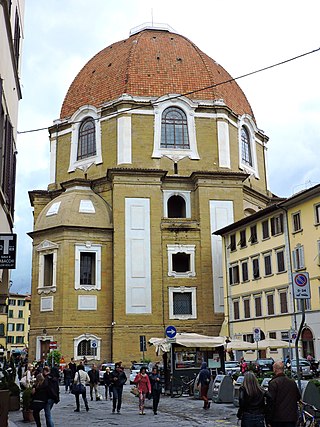
Cappella dei Principi is the mausoleum of the Grand Dukes of Tuscany and their families and is part of the museum complex of the Medici Chapels of Florence, adjacent to the Basilica di San Lorenzo.
Sight 33: Auditorium al Duomo
The Auditorium al Duomo is a theater in Florence, Italy. The main entrance is in Via de' Cerretani, the rear one in Via dell'Alloro, inside a hotel.
Sight 34: Chiesa di Santa Maria Maggiore
Santa Maria Maggiore di Firenze is a Romanesque and Gothic-style, Roman Catholic church in Florence, region of Tuscany, Italy. This is among the oldest extant churches in Florence.
Sight 35: Palazzo Portigiani
Palazzo Portigiani, or Da Cepparello Pasquali, is located in Via de' Rondinelli 4 in Florence.
Sight 36: Palazzo Adorni Braccesi
Palazzo Adorni-Braccesi is located in Florence in Via de' Rondinelli 1, separated from the narrow Via del Trebbio by Palazzo Antinori.
Sight 37: Palazzo Franceschi
Palazzo Franceschi is located in Florence, in Via de' Rondinelli 3, next to Palazzo Adorni-Braccesi.
Sight 38: Palazzo Ginori
Palazzo Ginori is located in Via de' Rondinelli 7 in Florence.
Sight 39: Palazzo Mondragone
The Palazzo Mondragone, also known as Palazzo Mandragone, Ambron(n), Ricasoli di Meleto, or Peyron, is a palace located on Via del Giglio #4r-8r in central Florence, region of Tuscany Italy.
Sight 40: Basilica di Santa Maria Novella
Santa Maria Novella is a church in Florence, Italy, situated opposite, and lending its name to, the city's main railway station. Chronologically, it is the first great basilica in Florence, and is the city's principal Dominican church.
Sight 41: Perfume Workshop-Pharmacy of Santa Maria Novella
The Officina Profumo-Farmaceutica di Santa Maria Novella is a perfumery and herbalist shop in Florence, in Tuscany in central Italy. It is not a pharmacy and does not sell medicines, but is sometimes described as "the oldest pharmacy in the world".
Wikipedia: Officina Profumo-Farmaceutica di Santa Maria Novella (EN)
Sight 42: Orti Oricellari
The Orti Oricellari are a monumental garden in the street of the same name near Santa Maria Novella, in Florence. It was the garden of what is now called Palazzo Venturi Ginori, and belonged to the Rucellai family, of which "Oricellari" is a variant of the family name.
Sight 43: Chiesa di Santa Lucia sul Prato
The church of Santa Lucia sul Prato is a Catholic place of worship located on Via di Santa Lucia in the historic center of Florence.
Sight 44: Monumento a Garibaldi
The Monument to Giuseppe Garibaldi is a celebratory sculpture of Florence, located on the Lungarno Amerigo Vespucci in the widening between Villa Favard and Palazzo Calcagnini Arese. In bronze, cast in 1890 by the sculptor Cesare Zocchi, placed on a high stone pedestal.
Sight 45: Teatro Comunale
The Teatro Comunale di Firenze is an opera house in Florence, Italy. It was originally built as the open-air amphitheatre, the Politeama Fiorentino Vittorio Emanuele, which was inaugurated on 17 May 1862 with a production of Donizetti's Lucia di Lammermoor and which seated 6,000 people. It became the focus on cultural life in the city. After closure caused by fire, it reopened in April 1864 and acquired a roof in 1882. By 1911 it had both electricity and heating.
Share
How likely are you to recommend us?
Disclaimer Please be aware of your surroundings and do not enter private property. We are not liable for any damages that occur during the tours.
GPX-Download For navigation apps and GPS devices you can download the tour as a GPX file.
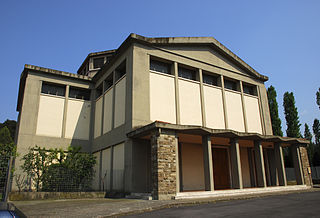
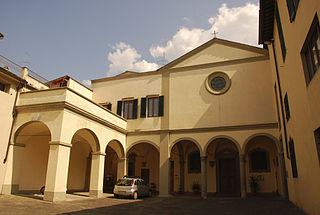
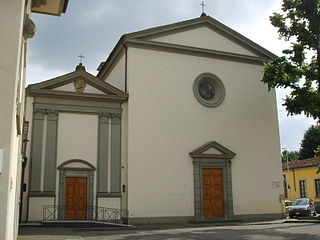
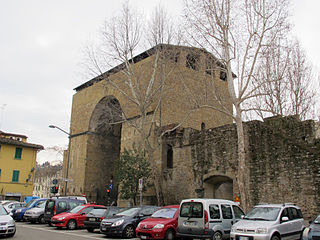
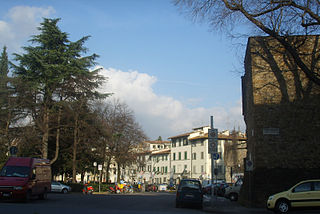
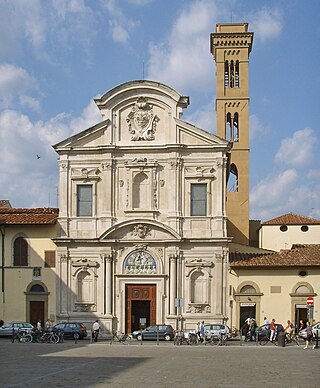

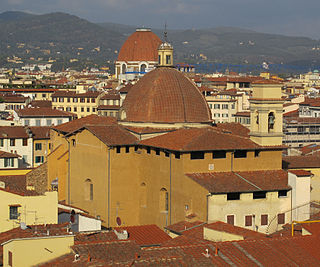
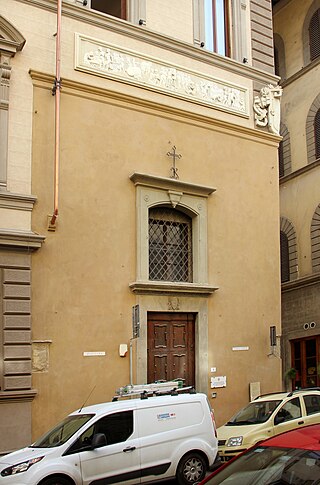

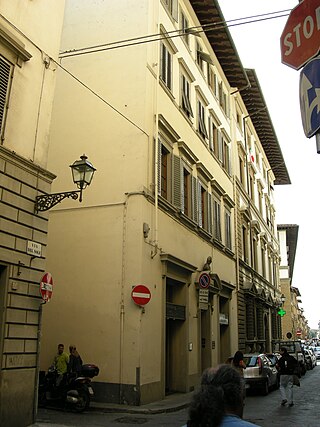
.jpg)

